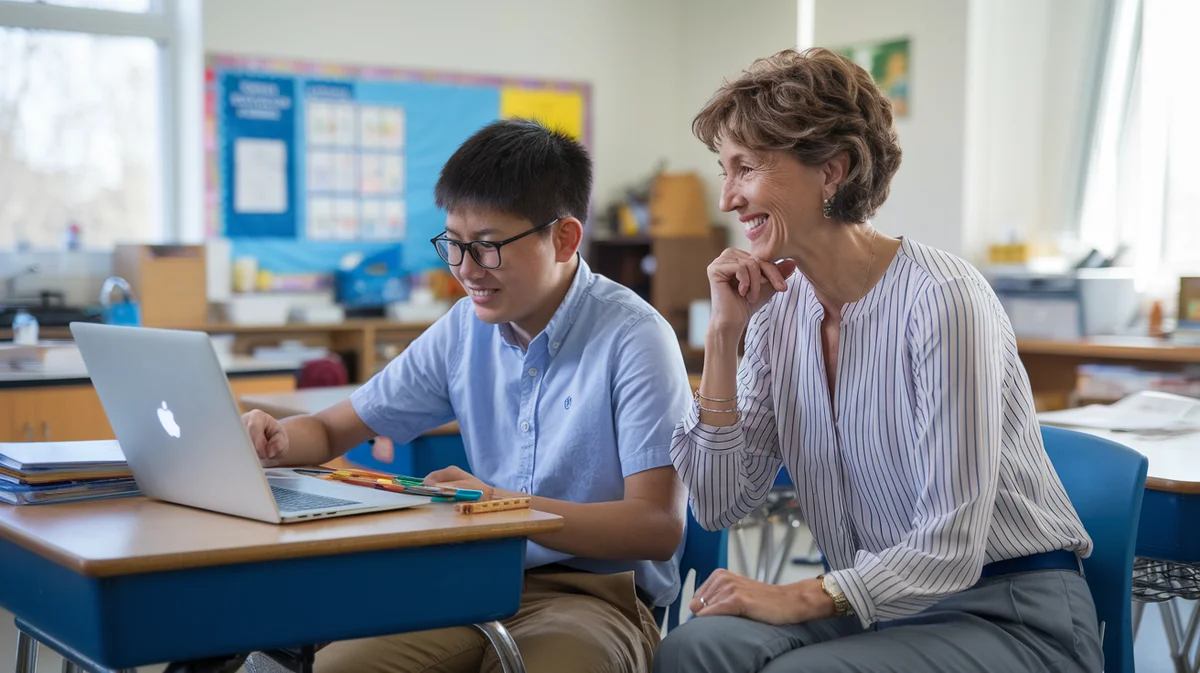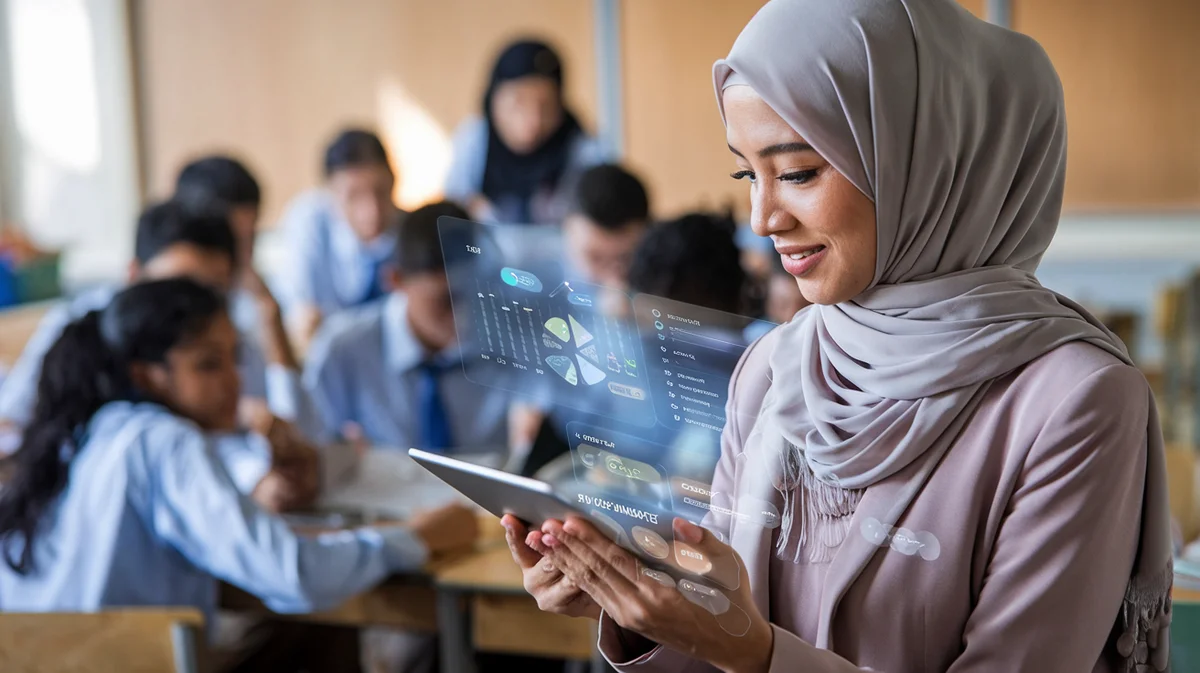Is Inclusive Education Failing High Achievers? Teacher Insights on Mixed-Ability Classrooms


wp:paragraph
Inclusive education has become a cornerstone of modern educational policy, promising equal opportunities for all students — regardless of ability. But as more classrooms embrace mixed-ability models, a critical question emerges: Are high achievers being left behind? Drawing on teacher insights, recent research, and our own experience at UNOWA, we explore the nuanced realities of inclusive education disadvantages and the strategies needed to ensure every learner thrives.
/wp:paragraph
wp:heading {"level":2}
The Rise of Inclusive Education: A Global Perspective
/wp:heading
wp:paragraph
Across Europe, Central Asia, and beyond, inclusive education is on the rise. In the EU, the percentage of students with special educational needs (SEN) in mainstream settings increased from 53% in 2012/2013 to 61% in 2014/2015. Central and Eastern Europe, the Caucasus, and Central Asia have seen the proportion of children with disabilities in special schools drop from 78% in 2005/06 to 53% in 2015/16. These shifts reflect a global commitment to integrating all students into mainstream classrooms and moving away from segregated, medical-model approaches (European Agency for Special Needs and Inclusive Education, UNESCO).
/wp:paragraph
wp:paragraph
At UNOWA, we are proud to contribute to this transformation by designing and delivering complete educational systems that are adaptable to national standards and ready for large-scale impact. Our inclusive education solutions, such as MIKKO, are tailored to empower institutions, educators, and students in diverse contexts.
/wp:paragraph
wp:heading {"level":2}
Teacher Insights: The Mixed-Ability Classroom Dilemma
/wp:heading
wp:paragraph
While inclusive education brings undeniable benefits — such as improved social integration and reduced out-of-school rates — it also introduces complex challenges, especially for high-achieving students.
/wp:paragraph
wp:heading {"level":3}
The Challenge for High Achievers
/wp:heading
wp:paragraph
Teachers across the EU, MENA, and CIS regions consistently report that mixed-ability classrooms can make it difficult to sufficiently challenge high achievers. The need to differentiate instruction for a wide range of abilities often means that teachers must devote significant attention to students who struggle, sometimes at the expense of those who excel.
/wp:paragraph
wp:paragraph
A 2021 meta-analysis found that while inclusive education benefits students with general learning difficulties in terms of academic performance and well-being, the impact on high achievers is less clear and may depend heavily on the quality of differentiation and support provided (Frontiers in Education).
/wp:paragraph
wp:quote
“Differences between students are increasingly viewed as more quantitative than qualitative. This is often accompanied by the demand that all students, including high achievers, receive tailored support to maximize their potential.” — Education Policy Expert
/wp:quote
wp:heading {"level":3}
Teacher Workload and Resource Constraints
/wp:heading
wp:paragraph
Managing a classroom with diverse needs increases teacher workload and can lead to stress or burnout, especially when support staff or resources are limited. Among 30 education systems reviewed in Eurasia, 23 offer counseling and mentoring, 22 provide learning assistance, and 21 have specialist and therapist support. However, these resources are not always sufficient or evenly distributed.
/wp:paragraph
wp:heading {"level":2}
Inclusive Education Disadvantages: What the Data Shows
/wp:heading
wp:paragraph
The inclusive education disadvantages most frequently cited by educators and researchers include:
/wp:paragraph
wp:list
- Insufficient Differentiation: Without robust differentiation strategies, high achievers may experience slower academic progress or disengagement.
- Limited Enrichment: Schools often lack the resources or programs to provide enrichment or advanced study opportunities within the inclusive framework.
- Teacher Burnout: The increased demands on teachers can lead to higher rates of stress and burnout, impacting classroom effectiveness.
- Inconsistent Implementation: Policy and practice vary widely across regions, with some systems still relying on medical-psychological assessments for school admission, limiting true inclusion.
/wp:list
wp:heading {"level":2}
Professional Advice: Meeting the Needs of All Learners
/wp:heading
wp:paragraph
At UNOWA, we believe that inclusive education should never mean compromising on excellence. Here’s how institutions can ensure high achievers are not left behind:
/wp:paragraph
wp:heading {"level":3}
1. Differentiated Instruction
/wp:heading
wp:paragraph
Teachers should employ differentiated instruction, using tiered assignments and flexible grouping to keep high achievers engaged and challenged. This requires ongoing professional development and access to high-quality, curriculum-aligned content.
/wp:paragraph
wp:heading {"level":3}
2. Enrichment Opportunities
/wp:heading
wp:paragraph
Schools should provide enrichment programs, extracurricular activities, and opportunities for advanced study. These can be integrated within the inclusive framework, ensuring that high achievers have pathways to excel.
/wp:paragraph
wp:heading {"level":3}
3. Collaboration and Support
/wp:heading
wp:paragraph
Regular collaboration with special educators, counselors, and gifted education specialists is essential. Support systems — such as those offered by our MIKKO platform — can help teachers address the needs of all students effectively.
/wp:paragraph
wp:heading {"level":3}
4. Leveraging Technology
/wp:heading
wp:paragraph
Innovative digital tools and analytics, like those developed by UNOWA, enable personalized learning at scale. Adaptive platforms can help teachers identify and nurture high achievers, even in mixed-ability settings.
/wp:paragraph
wp:heading {"level":2}
Policy and Regulation: The International Landscape
/wp:heading
wp:heading {"level":3}
European Union
/wp:heading
wp:paragraph
The EU promotes inclusive education as a fundamental right and monitors member states’ progress through initiatives like the European Semester and the Education and Training Monitor. Resources such as the European Toolkit for Schools support collaborative, inclusive practices.
/wp:paragraph
wp:heading {"level":3}
Eurasia and CIS
/wp:heading
wp:paragraph
Most countries have adopted a rights-based definition of inclusion, though implementation varies. In some systems, school admission still depends on medical-psychological assessment, which can limit true inclusion.
/wp:paragraph
wp:heading {"level":3}
MENA Region
/wp:heading
wp:paragraph
The MENA region is increasingly engaging in inclusive education reforms, often with international support and pilot programs. However, disparities persist in access and quality, particularly for high achievers.
/wp:paragraph
wp:heading {"level":2}
Recent Developments and Innovations
/wp:heading
wp:paragraph
The European Commission is expanding online platforms such as eTwinning and Erasmus+ Virtual Exchange to support teacher training and intercultural exchange, aiming to improve inclusivity and equal opportunities. At UNOWA, we are at the forefront of developing cutting-edge educational solutions that empower educators to create a brighter future for all students.
/wp:paragraph
wp:heading {"level":2}
Proven Strategies from Global Reform Projects
/wp:heading
wp:paragraph
Drawing on over 15 years of experience and more than 300 national projects, we have identified several proven strategies for successful inclusive education:
/wp:paragraph
wp:list
- Comprehensive Training: Ongoing professional development for teachers in differentiation and enrichment.
- Integrated Support Systems: Access to counselors, mentors, and specialists.
- Data-Driven Decision Making: Using analytics to monitor student progress and tailor interventions.
- Community Engagement: Involving parents, local leaders, and stakeholders in the design and implementation of inclusive programs.
/wp:list
wp:heading {"level":2}
FAQ: Inclusive Education and High Achievers
/wp:heading
wp:heading {"level":3}
What are the main disadvantages of inclusive education for high achievers?
/wp:heading
wp:paragraph
The most significant disadvantages include insufficient differentiation, limited enrichment opportunities, and increased teacher workload, which can result in high achievers receiving less attention or challenge.
/wp:paragraph
wp:heading {"level":3}
How can schools support high achievers in mixed-ability classrooms?
/wp:heading
wp:paragraph
Schools can support high achievers by providing differentiated instruction, enrichment programs, and opportunities for advanced study. Collaboration with gifted education specialists and the use of adaptive technology are also key.
/wp:paragraph
wp:heading {"level":3}
Are there policies that protect the rights of high achievers in inclusive settings?
/wp:heading
wp:paragraph
While most policies focus on the rights of students with disabilities, the EU and other regions increasingly emphasize the need for tailored support for all students, including high achievers. Implementation, however, varies by country.
/wp:paragraph
wp:heading {"level":3}
What role does technology play in supporting high achievers?
/wp:heading
wp:paragraph
Technology enables personalized learning at scale, allowing teachers to identify and nurture high achievers even in mixed-ability classrooms. Platforms like those developed by UNOWA offer analytics and adaptive content to support differentiation.
/wp:paragraph
wp:heading {"level":3}
Where can I learn more about inclusive education best practices?
/wp:heading
wp:paragraph
For more information, visit UNOWA’s website, European Agency for Special Needs and Inclusive Education, UNESCO’s Inclusion in Education, and Frontiers in Education.
/wp:paragraph
wp:paragraph
Empowering educators to create a brighter future for all students is at the heart of what we do at UNOWA. By combining innovation, inclusivity, and expertise, we help institutions transform learning experiences — ensuring that no student, including high achievers, is left behind. Let’s work together to build a future-ready, inclusive education system that truly meets the needs of every learner.
/wp:paragraph








